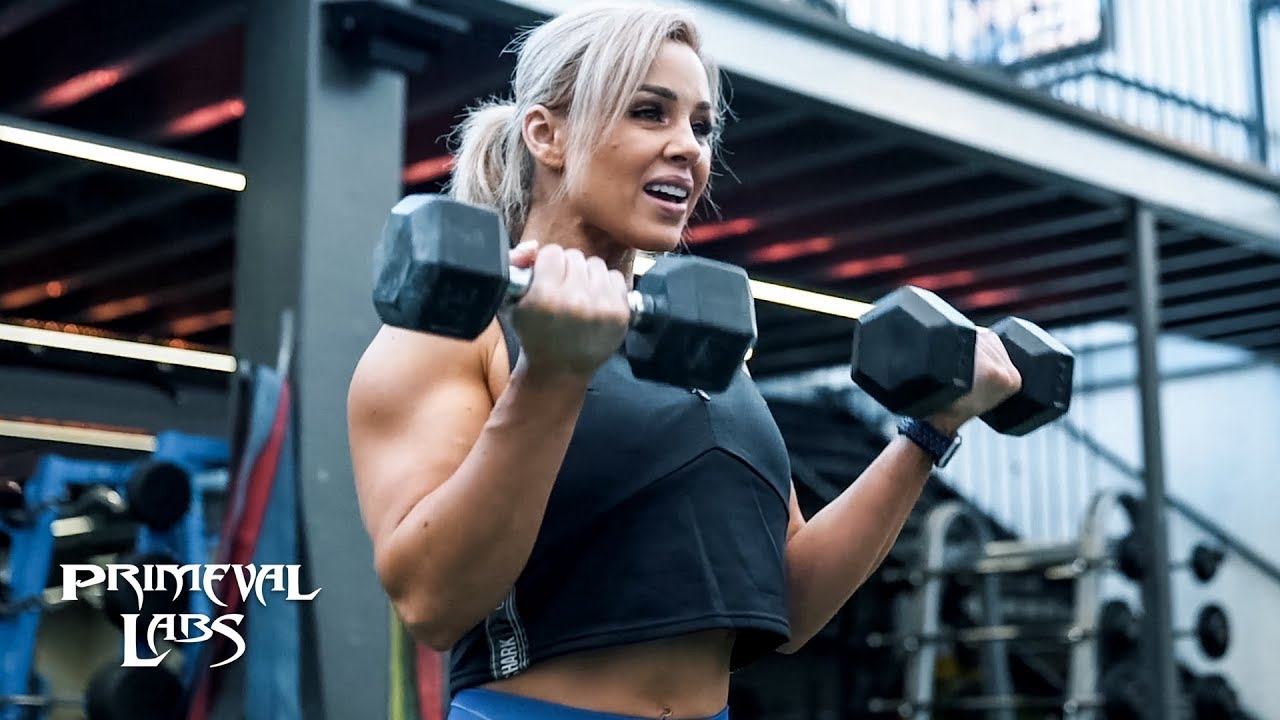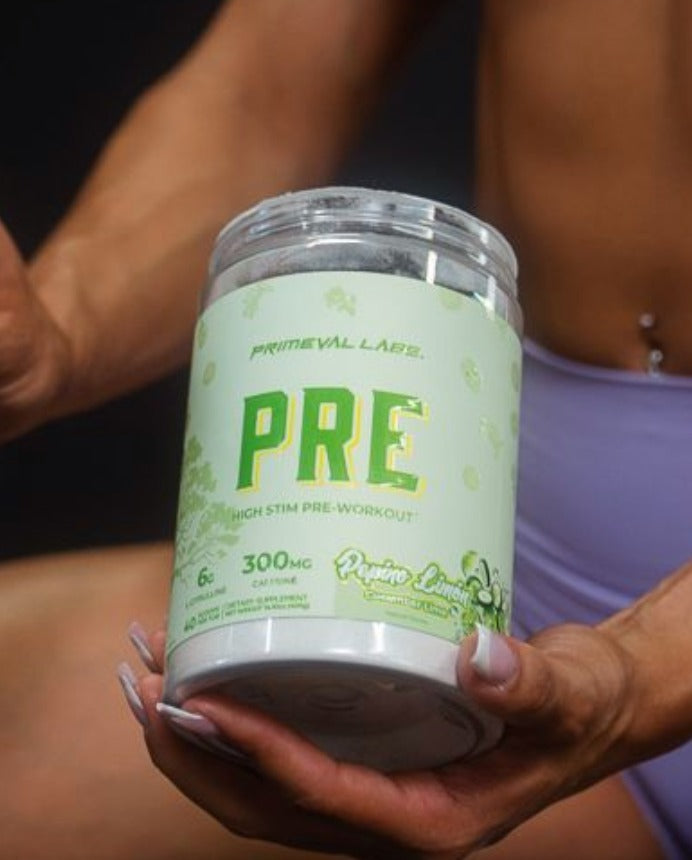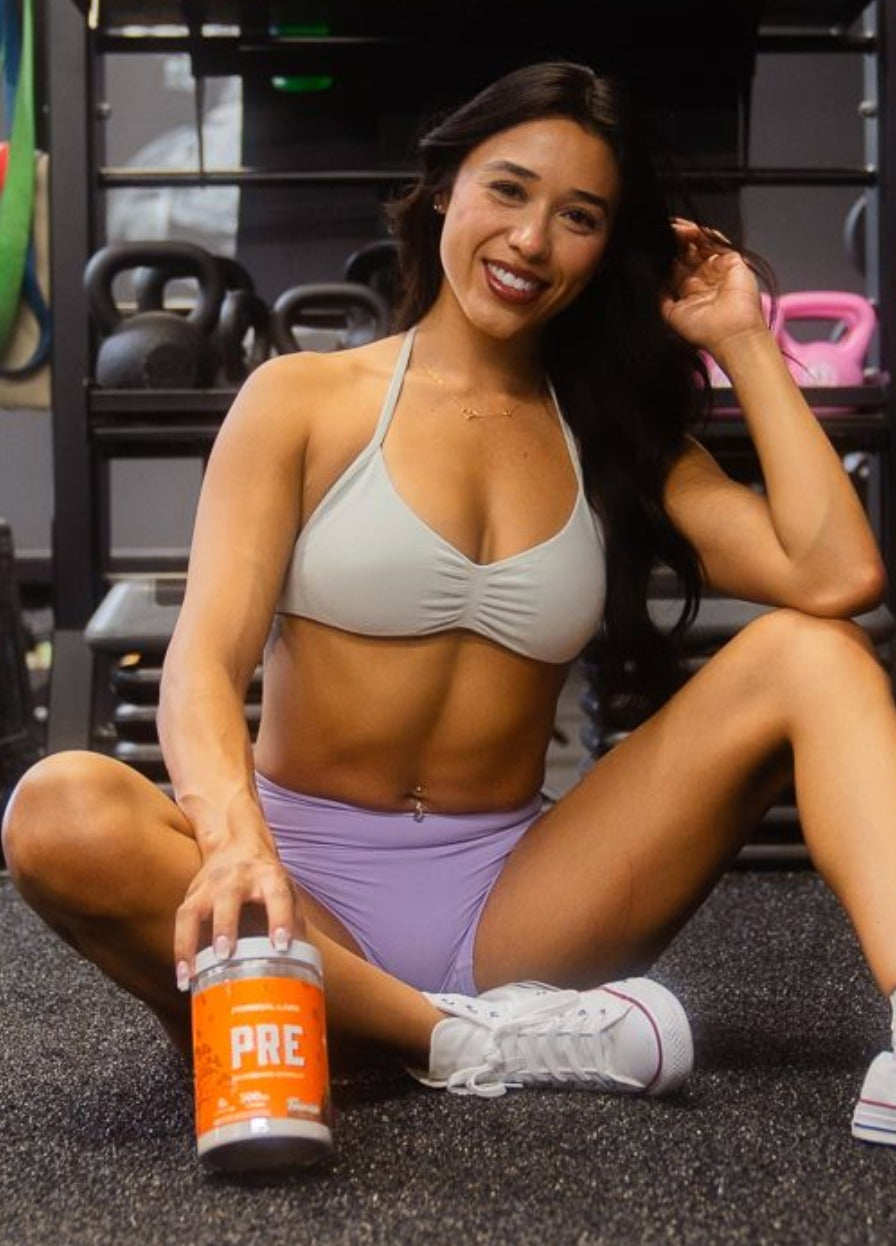If you want to know how to build a wider back and bigger biceps in only 30 minutes, then you want to read this quick, effective back and biceps workout for mass.
These days, our time is more limited than ever as we tend to work longer hours and have to drive long commutes to work. Besides that, we’ve also got additional constraints on our time due to social obligations with family, friends, and colleagues.
Add it all together, and that can mean there is little to no time left for you to get in the gym and wreck the weights like you used to.
But, believe it or not, even on the tightest schedule, you can still build considerable amounts of muscle and strength. It’s just going to require complete and utter focus, dedication, and determination if you want to make the most of your limited time.
And, we’re going to show you how it is entirely possible to build muscle and strength in only 30 minutes. To prove our point, we’re going to show you how to do it with two of the most stubborn muscle groups around -- back and biceps.
Need a Boost?
Ape Sh*t Alpha is a high-energy pre-workout supplement scientifically-formulated to support increased athletic performance.
3 Keys to Effective Back and Bi Workouts
Focus on Compound Movements
When you’re in a time crunch, you don’t have time to waste piddling between all sorts of isolation exercises. To make the most of your 30 minute back workout and gain bigger biceps, you need to hit both the back and biceps hard.
The most effective and time-efficient way to smash your back and bis is by prioritizing compound exercises.
Compound exercises are ideal for those busy professionals who look for the greatest muscle-building bang for their exercise buck.
What constitutes a compound exercise for the back?
Pull-ups, rows, and deadlifts.
In other words, compound exercises are multi-joint movements that work several muscle groups at one time.
As you’ll see in a bit, we’ve only included one direct bicep training exercise. The reason for this is simple -- the biceps are stimulated in all back exercises!
Focus on Form First, Weight Second
One of the main reasons (probably the main reason) a lot of gym rats fail to achieve significant results from their best back and bicep workouts has to do with the fact that they aren’t properly performing the exercises.
Rather than lifting and lowering the weight under control, most lifters tend to do a lot of heaving and hoeing, using all sorts of body English to get the weight up and down. While you might think heaving a bunch of weight around makes you look like a badass in the gym, the truth is that you’re wasting a lot of energy, having a less effective workout, and increasing the likelihood of injury.
Plus, all that jerking and flailing is doing little to reinforce good movement patterns or build a stronger mind-muscle connection.
To get more out of your workouts, check your ego and use a weight that allows you to maintain proper form throughout the entire range of motion. What you’ll lose in weight on the bar, you’ll make up for in rep quality, which ultimately translates to bigger better gains.
Speaking of range of motion…
Use a Full Range of Motion!
One of the most common questions we receive is whether lifters should use a full range of motion reps or partial reps.
We’ll keep this short and sweet.
When it comes to maximizing muscle growth (aka hypertrophy), you want to use full range of motion reps. The reason for this is pretty simple -- when using a full range of motion, the muscle is under tension for longer periods of time and has to perform a greater amount of total work due to having to move a given load over a greater distance.
Therefore, using full range of motion reps allows for greater mechanical tension and higher amounts of metabolic stress to be placed on the target musculature -- both of which happen to be drivers of muscle growth.
If you cannot perform an exercise with a full range of motion using a given load, see the previous point about dialing back the weight and use a load that allows for perfect form on every rep while using a full range of motion.
30 Minute Back and Bicep Workout
|
Exercise |
Sets |
Reps |
|
Weighted Chin Ups |
4 |
8-10 |
|
Seated Cable Row |
4 |
10-12 |
|
Straight Arm Pulldown* |
3 |
10-12 |
|
Rope Hammer Curls* |
3 |
12-15 |
*Note: Superset Straight Arm Pulldown with Rope Hammer Curls
Best Back and Bicep Workout Tips
Weighted Chin-Ups
For training the back and biceps, there may be no better exercise than weighted chin-ups. It hammers all muscles of the upper back, particularly the lats, and also serves as a great bodyweight exercise for the biceps on the rare occasion when you find yourself without a pair of dumbbells.
When performing chin-ups or pull-ups, make sure to initiate the movement from a dead hang with straight arms.
At the start of each rep, make sure to retract and depress your shoulder blades. This helps reinforce good technique and ensure you’re using your back muscles to do the majority of the lifting as opposed to just your biceps.
If you can’t do full chin-ups, do “negative” chin-ups where you jump to the top position of the pull-up and slowly lower yourself down until your arms are fully extended and repeat until failure.
Seated Cable Row
Machines catch a lot of flack from weight lifting purists, but in certain cases, machines actually provide a superior training stimulus compared to their free weight counterparts.
Case in point, cable rows and curls.
The reason we like cable rows is that they allow for constant tension on the muscles throughout the entire range of motion. When using free weights, there are certain positions during the rep when tension is significantly decreased or removed altogether.
Furthermore, the seated cable row also allows you to move heavier loads while placing less stress on the spine compared to barbell bent-over rows.
As we stated above, make sure to use a full range of motion.
Regarding seated cable rows, this means allowing the shoulder blades to protract at the end of each rep. Do not keep them pinned in place throughout the whole exercise as this both limits the total amount of weight you can lift and the reps you can complete. It can also lead to faulty scapular mechanics.
Straight Arm Pulldown
When you hear the word pulldown, you naturally think of the classic seated variety that many lifters perform in place of pull-ups. While the traditional seated pulldown is a great exercise for building a bigger, stronger back, the straight-arm pulldown might just be the most underrated lat-building exercise there is.
Beyond building a wider v-taper, the straight-arm pulldown also helps improve shoulder health and stability as well as strengthens the teres major and posterior deltoid. And, if you’re someone who struggles to really feel their lats during any type of back exercise, the straight arm pulldown is an ideal exercise to prime the mind-muscle connection.
Plus, the straight-arm pulldown also helps train the function of the lats resembling the manner in which they are used in the deadlift -- keeping the bar close to your body
In other words, if you want stronger lats and more “3D”-looking shoulders, you want to perform the straight-arm pulldown in your back and bicep workouts.
Rope Hammer Curls
The biceps have already gotten a considerable amount of work thanks to the chin-ups and rows, but to finish them off and build a bigger bicep peak, we’re going to throw in one isolation exercise -- the rope hammer curl.
The reason we chose the cable hammer curl is three-fold:
- Using the cable machine allows for constant tension on the biceps from start to finish -- during typical free weight curls, tension is significantly reduced on the biceps at both ends of the range of motion
- You’re already standing at the cable column when performing the straight-arm pulldown. By super setting these two non-competing exercises, you save time and complete more total training volume, helping to maximize muscle building on your tight schedule.
- Hammer curls, in addition to training the biceps, also help train the brachialis -- the little muscle that lies in between the biceps and triceps. Building a bigger, stronger brachialis helps create more separation between the biceps and triceps and also helps to push up the biceps, resulting in a better peak.
Using your limited time to hit this 30 minute back and bicep workout with help you build a wider back and bigger biceps. Be quick and effective. Even the most stubborn muscles groups, back and biceps, can be built in just 30 minutes.












Leave a comment
This site is protected by hCaptcha and the hCaptcha Privacy Policy and Terms of Service apply.